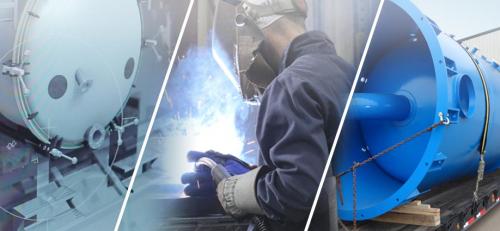Differences Between Ultrasonic & Radiographic Weld Inspection

Among the most commonly used non destructive testing methods for the purpose of weld inspection in Melbourne, ultrasonic testing and radiographic inspection deserve a special mention. They help to point out discontinuities within internal structure of the welds. One advantage which both of them offer is that they aid in establishing the integrity of a weld without damaging the component.
There are, however, substantial differences between the two, and it is these distinctions that help in determining which one would be suitable for testing what kind of weld. Let’s take an elaborate look at each non destructive testing method for understanding the areas in which they differ.
Ultrasonic Testing (UT)
 Typically used on non ferrous as well as ferrous materials, this method can help to test denser sections that are accessible only from one side. It is ideally capable of detecting extremely fine planar or linear defects. When conducting a UT, mechanical vibrations resembling sound waves but with higher frequency are used. The test object receives a beam of ultrasonics, which then travels via the former with a small amount of loss in energy, unless intercepted & reflected by some discontinuity.
Typically used on non ferrous as well as ferrous materials, this method can help to test denser sections that are accessible only from one side. It is ideally capable of detecting extremely fine planar or linear defects. When conducting a UT, mechanical vibrations resembling sound waves but with higher frequency are used. The test object receives a beam of ultrasonics, which then travels via the former with a small amount of loss in energy, unless intercepted & reflected by some discontinuity.In other words, when ultrasonic waves strike flaws, they get reflected back to transducer, which behaves like a receiver for reflected energy. One of the most utilitarian properties of UT is that it can help in determining the precise location of a weld’s discontinuity.
Radiographic Testing (RT)
 This method is mainly suitable for welded joints accessible from both sides, and is used for detecting inclusions, porosity, voids & cracks in the interiors of a weld. It uses either gamma rays or X-rays, and while the former come from a radioactive isotope, the latter are produced using an X-ray tube. The fundamental principle of RT inspection involves passing the rays through an object onto a photographic film, so as to create a picture of the internal structure of the object.
This method is mainly suitable for welded joints accessible from both sides, and is used for detecting inclusions, porosity, voids & cracks in the interiors of a weld. It uses either gamma rays or X-rays, and while the former come from a radioactive isotope, the latter are produced using an X-ray tube. The fundamental principle of RT inspection involves passing the rays through an object onto a photographic film, so as to create a picture of the internal structure of the object.The energy which the object absorbs depends on its density and thickness. Whatever energy that remains unabsorbed, leads to exposure of the film. The areas remain dark after development of the photographic film, indicating the cracks or porosity present in the object. Inclusions with high density would be shown by the areas that remain lighter.
Apart from the above mentioned differences, UT also differs from RT by having more competency than the former. However, both these methods require the operator to posses a great amount of skill for ensuring effective testing.
Advertise on APSense
This advertising space is available.
Post Your Ad Here
Post Your Ad Here
Comments